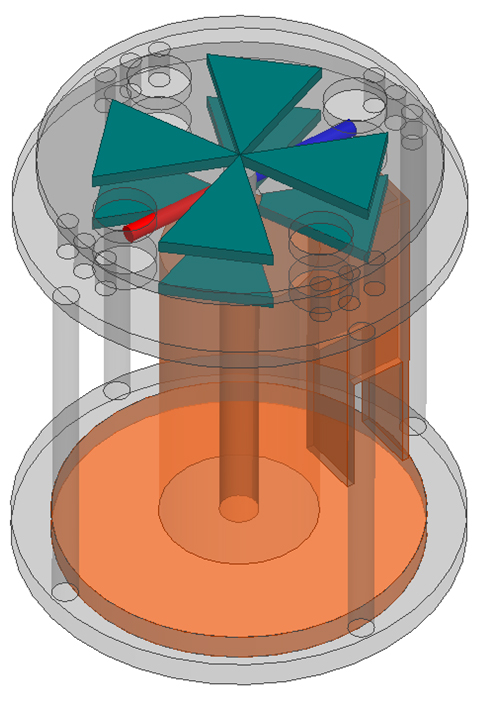Wireless Communication Under the Sea
U-M researchers have created a new means of enabling reliable wireless underwater communication, which could aid military, environmental, and conservation purposes.

 Enlarge
Enlarge
Kamal Sarabandi, the Rufus S. Teesdale Professor of Engineering and Director of the Radiation Laboratory, and PhD student Navid Barani have developed a novel way of achieving reliable wireless underwater and underground communication. Reliable wireless underground and underwater communication is important for mining operation, military communication, as well as pollution monitoring, which is crucial for many conservation efforts and environmental purposes. It also helps advance scientific research of the deep seas, which has attracted increased interest in light of our changing climate.
The paper, “A New Phase Modulation Scheme for Ultra-Low Frequency Handheld Antennas Enabling Reliable Wireless Underwater Communication,” won the Best Paper Award in the Student Poster Competition at The 14th International Conference on Underwater Networks & Systems (WUWNet’19) that was held in Atlanta, Georgia, from October 23rd-25th.

 Enlarge
Enlarge
“The purpose of this research has been to develop antennas that enable underwater and, basically, underground communication,” Barani said, who is first-author on the paper. “An efficient mechanical antenna with phase modulation capability means you don’t need to be on the surface of the water to transmit signals.”
There are other approaches to underwater communication, such as acoustic and optical communication, but Barani says that these are not as good as electromagnetic-based communication. Optical communication is more affected by the turbidity of the water, and it is usually more appropriate for short distance communication. Acoustic waves require both the transmitter and receiver to be underwater, and the performance is degraded by interference from other acoustic sources.
Electromagnetic waves can be transmitted at any depth, but the typical electromagnetic-based underwater communications are limited to shallow water because of their frequency. They typically use microwave frequencies, which degrade quickly. Ultra-low frequencies allow for higher signal coverage, which would be particularly useful for deep-sea or underground purposes.
“The communication is more reliable,” Barani says, “But the problem is, at those low frequencies, the size of the antennas gets really gigantic.”

 Enlarge
Enlarge
There are miniaturization techniques to make antennas a more manageable size, but these techniques don’t work for underwater antennas. To solve this problem, Barani and Sarabandi employed the relatively new technique of mechanical antennas, which allows for very low-frequency handheld antennas.
“We accelerate charges by rotating magnets and electrodes using fast electric motors to cause electromagnetic radiation,” Barani says.
As long as the rotation (acceleration) of charges or magnets is maintained mechanically, the radiation efficiency of small mechanical antennas is significantly higher than conventional miniaturized antennas. However, the challenge is that bandwidth is still limited. Barani and Sarabandi offer a new way to take advantage of different modulation schemes to overcome these drawbacks.
“We first investigated the concept of mechanical antenna itself,” Barani said. “Then we came up with the modulation technique. We fabricated the proposed structure using 3D printing technology, and, finally, we verified its performance through couple of measurements.”